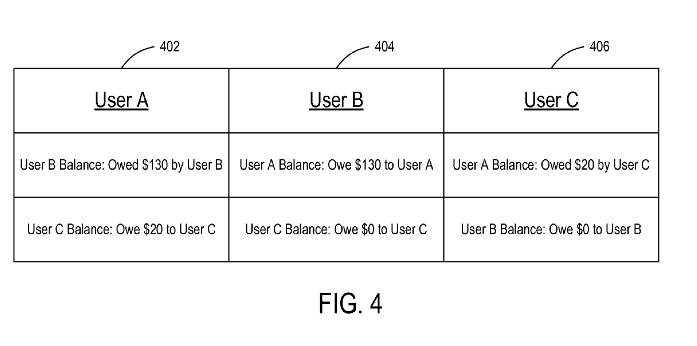
SML Security Market Line is a graphical representation of the capital asset pricing model of modern portfolio theory. SML shows the relationship between expected return and risk of a security. SML is constructed by plotting the risk and return of a security on a graph. SML is downward sloping, indicating that as risk increases, expected return decreases. SML is used by investors to decide whether a security is underpriced or overpriced. If a security’s expected return is greater than its SML, the security is underpriced and should be bought.

Now, say goodbye to scanning through all the videos and ploughing through pages and pages just to find what you are looking for. All the important formulas, definitions and diagrams you need for the exam are now at your fingertips at prepnuggets.com/glossary. I love the CFA Program and truly value the skills and ethics that are imparted to make me a better finance professional. My desire is to help candidates who are keen to pursue this path to do so in the most effective and painless process as possible – based on the lessons that I learnt as a candidate.
between Capital Market Line and Security Market Line
One of the differences between CML and SML, is how the risk factors are measured. While standard deviation is the measure of risk for CML, Beta coefficient determines the risk factors of the SML. The CML measures the risk through standard deviation, or through a total risk factor. On the other hand, the SML measures the risk through beta, which helps to find the security’s risk contribution for the portfolio.
- Therefore every portfolio plots on the SML because every security plots on SML.
- SML is a graphical representation of the relationship between the expected return and systematic risk of an asset or portfolio.
- The required rate of return, or “discount rate“, is one of the primary determinants that guide the decision-making process of an investor on whether to invest in the security.
- This is because it is unable to give the required return to compensate for the risk.
- To put it more broadly, not only every security but also every portfolio must plot on the upward sloping straight line in a diagram with expected return on vertical axis and beta on horizontal axis.
- Individual investors will either hold just the risk-free asset or some combination of the risk-free asset and the market portfolio, depending on their risk-aversion.
The Capital Market Line (CML) and the Security Market Line (SML) are both models that investors use to measure risk and expected return. The CML measures the relationship between risk and required return for all types of investments, while the SML specifically measures difference between cml and sml the relationship for a particular type of investment – stocks. Additionally, the CML is based on historical data, while the SML is based on current stock prices. Finally, the CML allows for diversification across different types of investments, while the SML does not.
Security Market Line Graph Example (SML)
Chronic myeloid leukemia and chronic lymphocytic leukemia are slow-growing forms of leukemia. Both types of leukemia are much more common in adults than in children. About 15 percent of all leukemia cases are CML and 38 percent of leukemia cases are CLL.
Why is CML better than SML?
SML determines only all the security-related factors or the risk or return for individual stocks. On the other hand, CML determines market portfolio and risk-free assets, or the risk or return for efficient portfolios.
Market economists use SMLs to understand and determine an investor’s behaviours in the investment line. Since the beta of the market is constant at 1.0, the slope can be re-written as the market return net of the risk free rate, i.e. the equity risk premium (ERP) formula from earlier. In our illustrative graph depicting the security market line (SML), the risk free rate is assumed to be 3% and the market return is 10%.
Looking for the best FRM® Exam Prep?
As a generalization, buy assets if the Sharpe ratio is above the CML and sell if the Sharpe ratio is below the CML. The standard deviation of the portfolio is shown along the
X-axis for CML, whereas, the Beta of security is shown along the X-axis for
SML. In a state of market equilibrium, the asset in question possesses the same reward-to-risk profile as the broader market. In theory, the market has correctly priced the security if it can be plotted directly on the SML, i.e. the market is in a state of “perfect equilibrium”. In this article, we’ll explain the differences in causes, treatments, and more.
L’amour calculé de la Chine pour dominer le monde – Les échos du Faso
L’amour calculé de la Chine pour dominer le monde.
Posted: Thu, 06 Sep 2018 07:00:00 GMT [source]
However, if the quick ratio is below CML, you should sell your shares/assets. The CML establishes the risk-return relationship of a portfolio while… Get instant access to video lessons taught by experienced investment bankers. Learn financial statement modeling, DCF, M&A, LBO, Comps and Excel shortcuts.
Explain, and graphically depict, how Security Market Line (SML) is different from Capital Market…
The capital asset pricing model (CAPM) is an equilibrium model that establishes the risk-return relationship of a security or a portfolio. The CML shows a graphical relationship between the portfolio’s expected return and its standard deviation. On the other hand, SML measures only systematic risk, which is also known as market risk. It is the risk that is inherent in the market as a whole and affects all securities in the market. SML is a graphical representation of the relationship between the expected return and systematic risk of an asset or portfolio.
What is the difference between CML and CML?
CLL treatment generally begins with chemotherapy and radiation, while CML treatment often focuses on managing symptoms and slowing the cancer progression.
Because the beta of the market is 1.0, we can confirm that the expected return comes out to 10%. The security market line (SML) is a graphed line that compares an investment’s expected return against the market. Identify the relationship between beta and the SML, and how they are used to inform investors about investment risk. It is usually popularly discussed among investors that one should buy assets if the Sharpe ratio is above the CML and sell if the ratio falls below the CML. Portfolios that fall on the capital market line (CML), in theory, optimize the risk/return relationship, thereby maximizing performance.
Security Market Line shows the relationship between the required return on individual security as a function of systematic, non-diversifiable risk. The efficient frontier is the set of optimal positions where the expected return is maximized given the set risk level, i.e. the target risk/return trade-off is reached. Intuitively, if the security is above the SML, the expectation is a higher return for the level of risk, albeit the opportunity might’ve been capitalized on by other market participants. The point on the y-axis where the SML begins, as one would reasonably assume, is the risk free return (rf).
- Security Market Line shows the relationship between the required return on individual security as a function of systematic, non-diversifiable risk.
- All investors who are not willing to take on extra risk will choose portfolios that lie on or below the CML.
- Many techniques are available to estimate expected rate of return but most of them yield results which are not accurate and reliable.
- We have considered Market Portfolio in the image as the Optimal Portfolio.
- While the Capital Market Line graphs define efficient portfolios, the Security Market Line graphs define both efficient and non-efficient portfolios.
- In common words, it determines the degree of your profit in the market as per your investment.
It is a theoretical concept that represents all the portfolios that optimally combine the risk-free rate of return and the market portfolio of risky assets. Once the optimal portfolio is determined, the investor can use CML to plot the expected return and risk of the efficient portfolio. CML is a straight line that connects the risk-free rate of return to the optimal portfolio of risky assets, where the portfolio’s expected return is maximized for a given level of risk. The portfolios with the most effective trade-off between expected returns and variance lie on this line.
What is the main difference between AML and CML?
Unlike acute myeloid leukemia (AML), CML takes longer to develop. Most people can live with CML for many years. Rarely CML can also turn into acute leukemia, which needs immediate medical attention.
